Air and water resistance
This lesson covers:
- How air and water resistance act as frictional forces
- The effects of air resistance on falling objects like parachutists
Air and water resistance
When objects move through air or water, a frictional force is exerted on the object called drag, that pushes against the motion.

- Air and water resistance try to slow moving objects down.
- More streamlined shapes can slip through the air or water easily with less drag.
Air resistance on falling objects
When a person parachutes from a plane, they experience changing air resistance and weight forces.
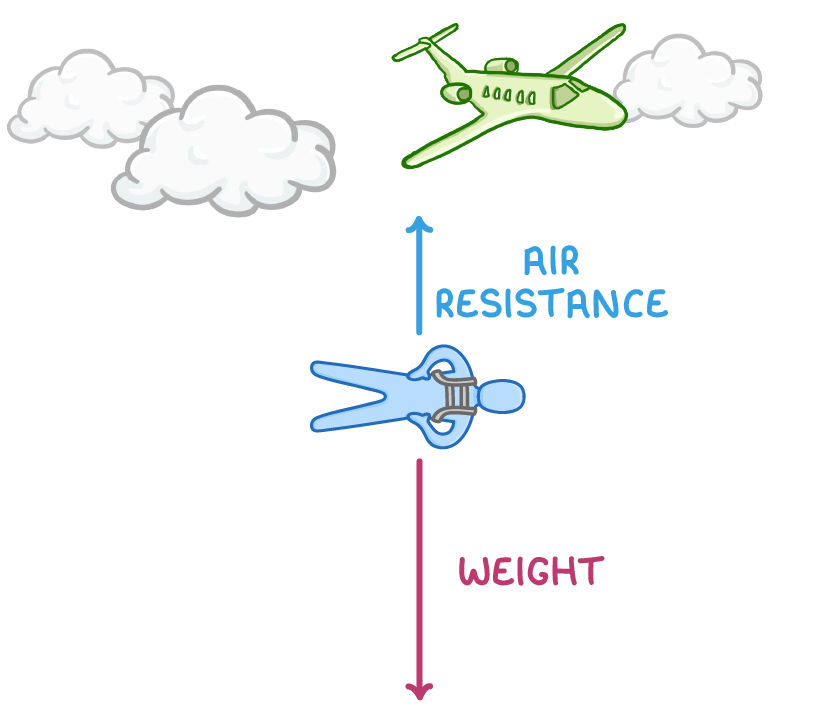
1. When a skydiver first jumps from a plane gravity (weight) is more than air resistance, accelerating their downward fall.
Terminal velocity
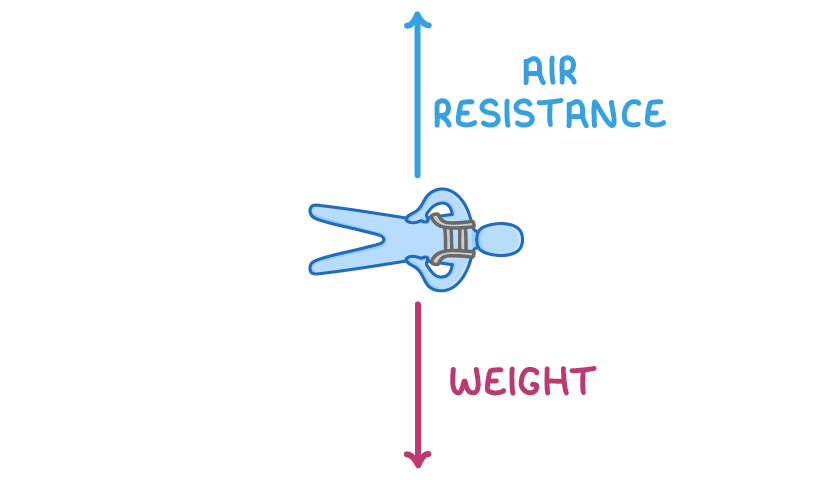
2. The skydiver's speed increases, causing greater air resistance pushing up.
3. Eventually the air resistance balances the weight and the skydiver falls at a constant speed - terminal velocity.
Unbalanced forces means a change in speed
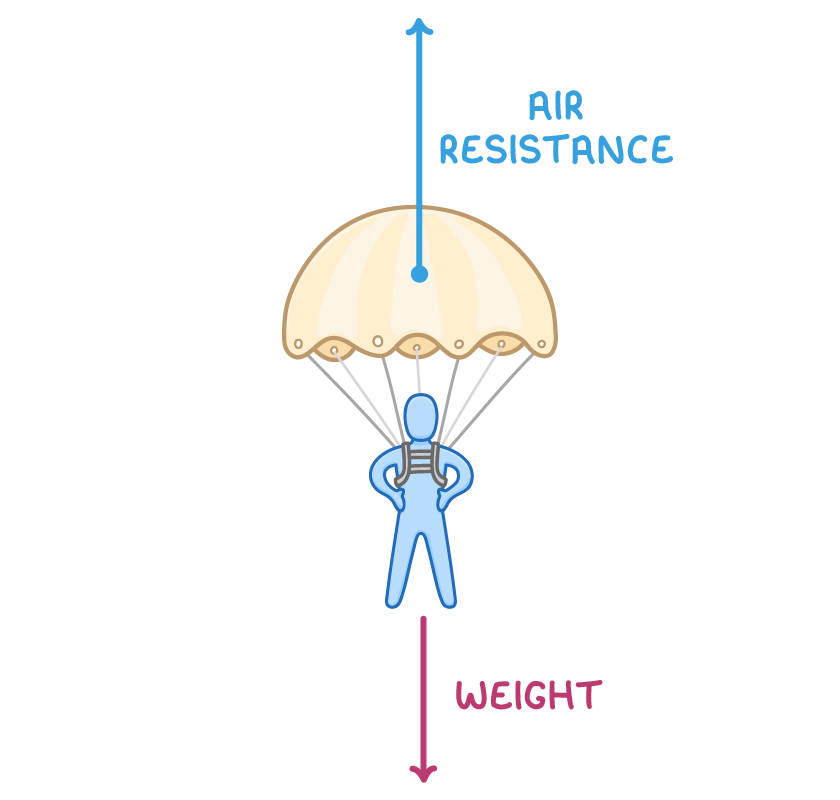
4. At a certain point, the skydiver opens their parachute, greatly increasing the air resistance.
5. The air resistance is more than the weight and so the speed at which the skydiver falls decreases.
Balanced forces means a steady speed
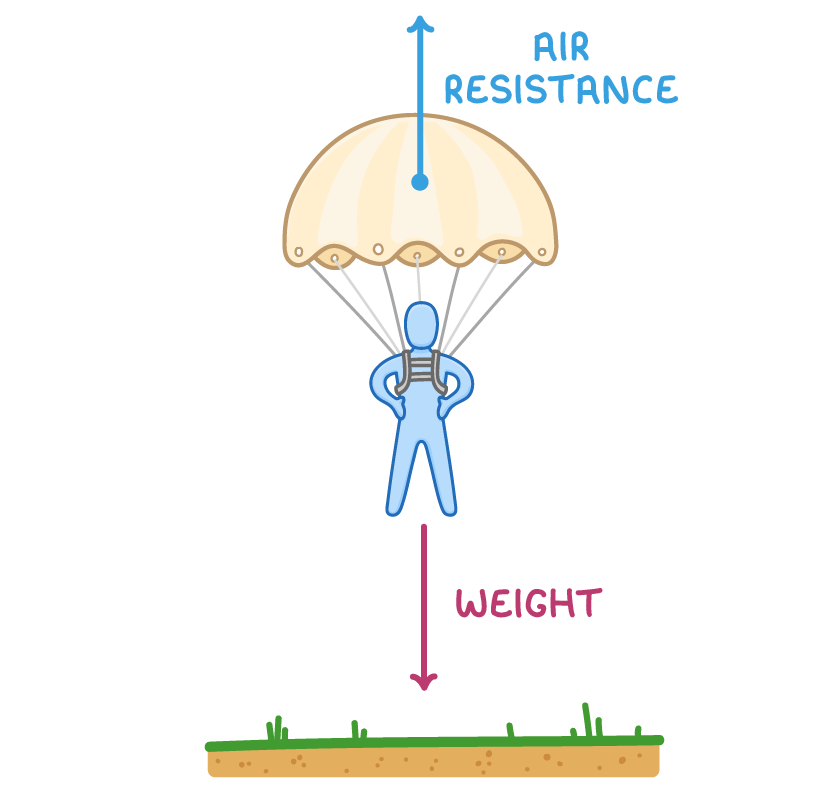
6. The upward air resistance grows equal to the downward pull of weight.
7. With balanced forces, the skydiver falls at a steady safe speed for landing.
Balanced forces can cause no movement
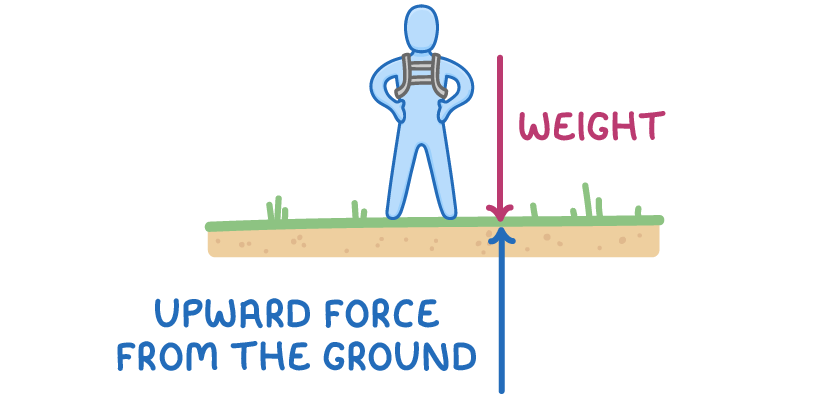
8. The skydiver lands safely and come to a stop as their weight is balanced with the upward force from the ground.